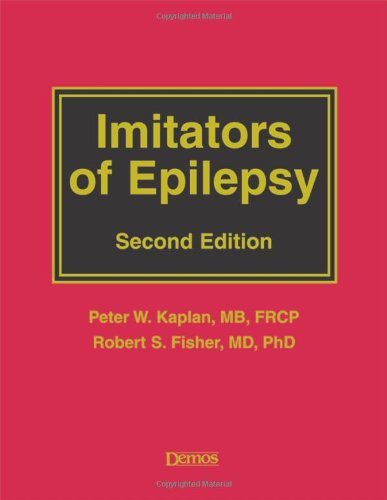Product desciption
Imitators Of Epilepsy Second Edition 2nd Edition By Peter W Kaplan Editor by By Peter W. Kaplan (editor), Robert S. Fisher (editor) 1888799838 instant download after payment.
Many patients referred for an epilepsy evaluation actually suffer from one of many conditions that can imitate it. Imitators of epilepsy are a diverse group that involve consideration of many areas of internal medicine, neurology, and psychiatry. The most important imitators of epileptic seizures are dizziness, vertigo, syncope, complicated migraine; and somewhat less frequently sleep disorders, transient cerebral ischemia, paroxysmal movement disorders, endocrine or metabolic dysfunction, delirium, psychiatric conditions or transient global amnesia. Clearly under-recognized are hyperventilation episodes, panic attacks, and other psychogenic and psychiatric paroxysmal disorders that may simulate epileptic seizures. This volume provides a comprehensive review of the differential diagnosis of seizures: how do the imitators of epilepsy present clinically, what are their particular distinguishing historical features, and what tests are helpful with diagnosis?Expanding beyond the first edition, this second edition is divided into four sections. The first deals with an introduction and approach diagnosing spells, the electroencephalography of epilepsy and its imitators, and specialized tests of diagnosis such as measurement of serum prolactin. There are chapters on epileptic seizures that do not look like typical epileptic seizures, and conversely, apparent epileptic seizures that are not. A second section approaches imitators of epileptic seizures along age-based lines; i.e., what sorts of spells are likely to beset infants, children, or the elderly? A third section addresses individual imitators of epilepsy, ranging from the common to the rare, from dizziness and faintness to startle disease, arranged according to whether they might simulate partial, generalized, or both types of epileptic seizures. The volume finishes off with hyperventilation syndrome, psychogenic seizures (with or without epilepsy), and panic disorders. Most chapters review the basic definitions and physiology of the respective imitator, followed by the clinical characteristics. Emphasis is given to those features that may differentiate it from an epileptic event, but also mark it for what it is, and give possible criteria for an alternate diagnosis. Case vignettes are used to illustrate particular aspects, along with tables that compare and contrast phenotypically similar conditions. Based on their extensive clinical experience, the authors provide a personal perspective on diagnosis and treatment. (20100503)


